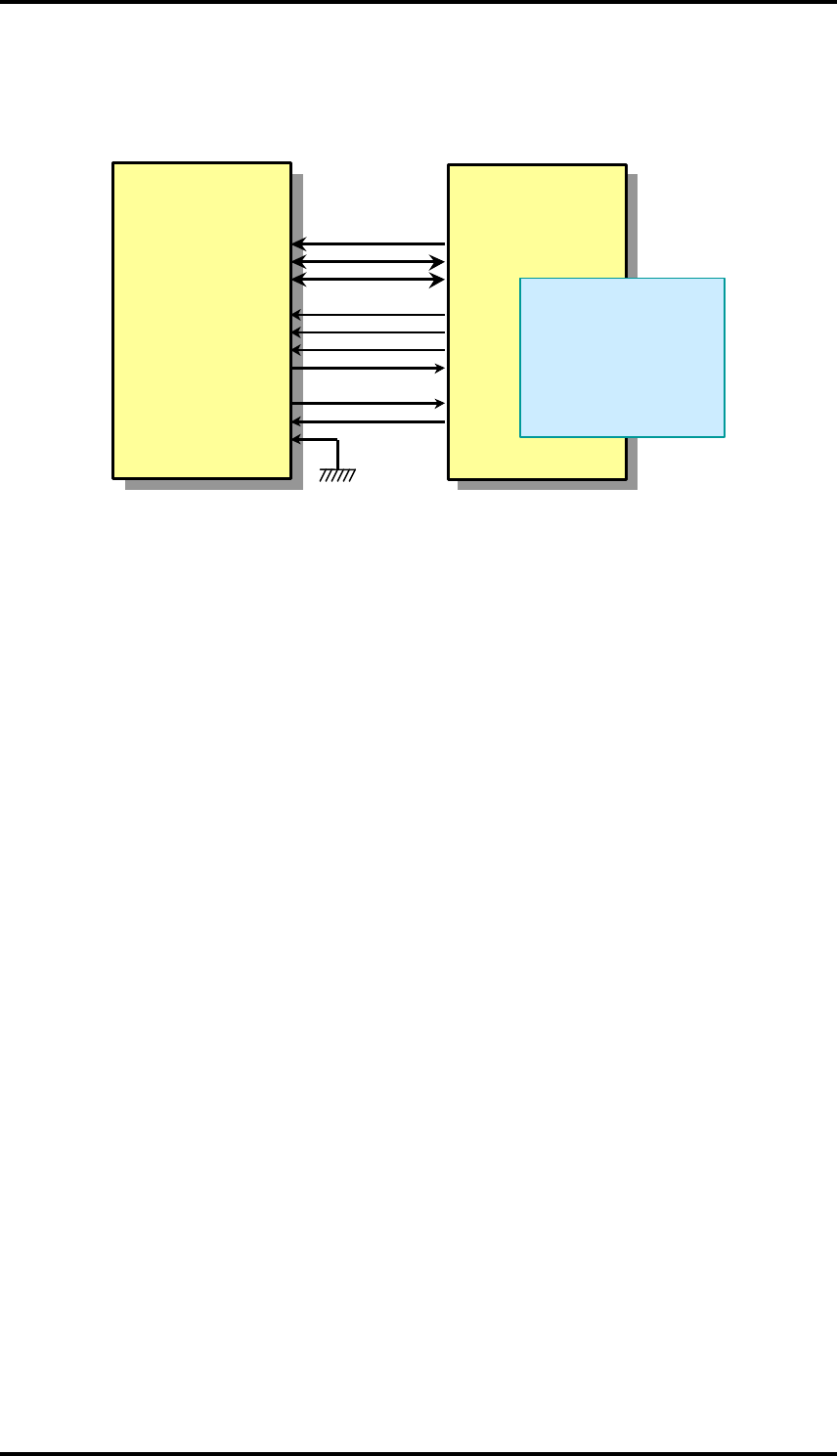
Chapter 4 Software Development
page 4-19
Figure 4.3.2 shows sample connections to a microcontroller with a 16- or 32-bit bus.
Register must be 8 bits wide. Only DMA uses 16-bit bus. Registers must be aligned at word
boundaries for 16-bit bus and at double boundaries for 32-bit bus.
Figure 4.3.2. Microcontroller with 16- or 32-Bit Bus
4-3-4. Special USB Considerations
The following are special points to keep in mind about USB functions.
(1) D+ pull-up resistor
Some systems require software control over the timing with which the USB device connects to
the upstream host or hub to provide extra time for initialization and other tasks. The JOB60851
board therefore gives the microcontroller control over the D+ pull-up resistor. For further
details, refer to the circuit diagram and the source code for the sample firmware.
(2) Vbus monitor
The JOB60851 board connects the USB power supply (Vbus) line to the microcontroller's
analog-to-digital converter. This arrangement makes it possible for the firmware to measure the
voltage and thus monitor the connection to an upstream host or hub for disconnected USB
cables or removal of power to the host personal computer or intervening hubs. For further
details, refer to the circuit diagram.
(3) Bus-powered operation
Moving both the J3 and J15 jumpers from their default 1-2 positions to their 1-3 positions
configures the JOB60851 board to take its power from the bus, eliminating the need for the
power adapter. We do not recommend using this setting, however, because of the board's
development role. The board is able to guarantee neither that power consumption, a function of
the program under development, is within the limit reported by the firmware nor that the device
under development observes the USB requirement of an average suspend current of 500 µA for
bus-powered devices. In the worst case scenario, a power consumption exceeding the figure
reported by the firmware risks damaging the host or intervening hubs.
The ML60851C is, strictly speaking, not a fully compliant bus-powered device. Although it
notifies the firmware when it suspends operation in response to a suspend signal from the bus, it
also shuts down its clock signal, rendering it unable to detect a subsequent resume signal from
the bus. calling sequence Shutting down the clock signal is, however, the only way to comply
ML60851C/D
16/32 bitMCU
+
DMA
A7-A0
D15-D8
RD/
WR/
CS/
INTR/
AD7-AD0
DACK
DREQ
ADSEL
A8-A1
D15-D8
RD/
WR/
CS/
INT/
D7-D0
DACK
DREQ
The 16-bit data
bus is only
available when
8- bit DMA is
used.


















